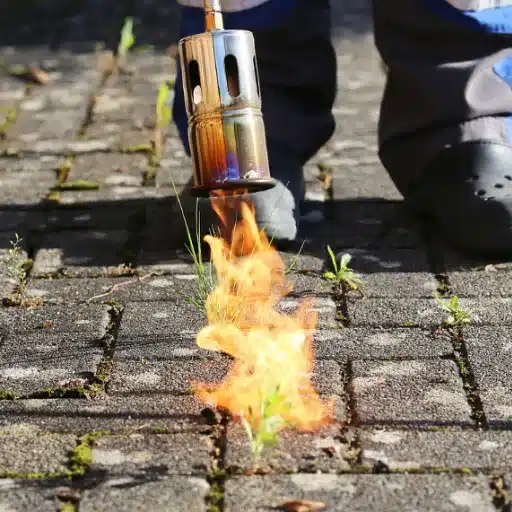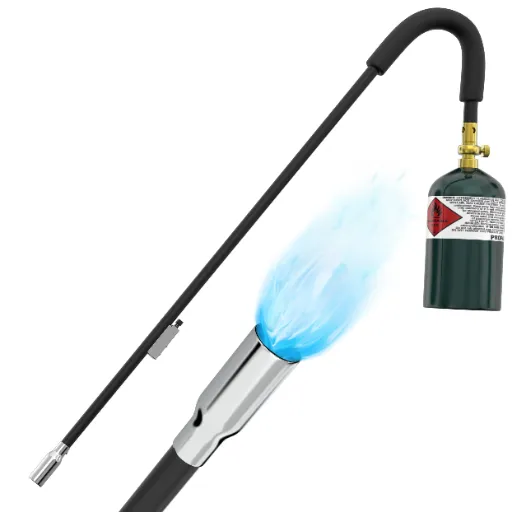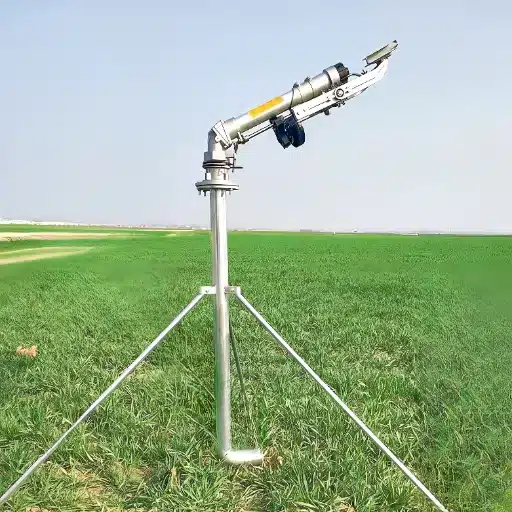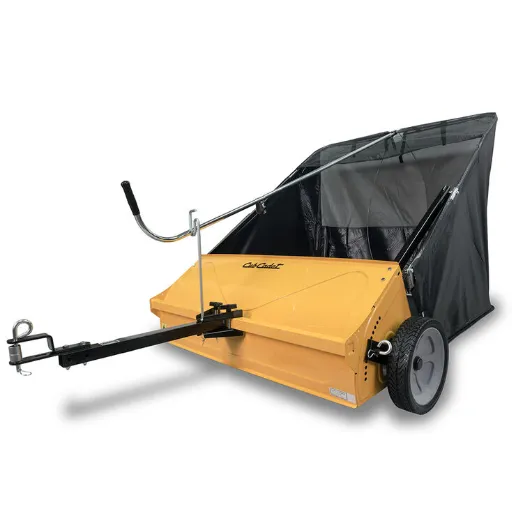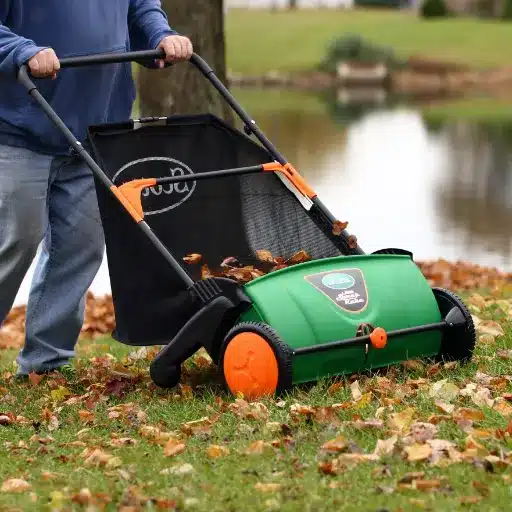Here we are with embroidery machine projects that encourage imagination and craftsmanship. This blog post aims to provide both novices and more advanced users with various projects that many can carry out on the embroidery machines, as possibilities of creating beauty and stimulating one’s imagination are boundless. From complex free patterns that will test your creativity to quick and easy-to-make designs that satisfy your need to make something quickly, the list is promising. We will outline various inspirational projects involving embroidery machines, illustrating their multi-functional nature that enables one to bike out clothes, decor, gifts, and so much more. Make your mark by turning basic fabric into pieces of art with the help of detailed instructions and handy tips that are about to be offered!
How Do You Start an Embroidery Project?

When picking an embroidery machine to commence an embroidery project, the first step is to choose a design that appeals to the user in the first place and does not exceed the user’s level of expertise. Ensure you have the required materials, be it fabric, stabilizer embroidery thread, etc. In preparation for the embroidery, fasten the fabric using the appropriate stabilizer so that it remains in position and does not move about when stitching. Install the design into the embroidery machine and correctly position the device. First, a test on a similar fabric that is not the original one involved in the project should be run to prevent wastage of fabric and identify the necessary alterations to the machine.
What Essential Tools Do You Need for Machine Embroidery?
There are a few tools and instruments, which, when starting with the machine embroidery, enable the efficient working of the projects. First and foremost, it is essential to have an embroidery machine designed according to individual requirements and expertise level. Various hoops will be necessary to maintain the tension of the fabric during the design process. It is desirable to have high-class embroidery threads to achieve beautiful and durable patterns and stabilizers to be used on the fabric, which can be cut-away, tear-away, or water-soluble. Also, a small pair of good cutting scissors is valuable, and they can cut threads very closely. Needles of the embroidery type and suitable for the fabric and thread in use are some of the tools you will need. Lastly, design software can greatly assist in enhancing or altering any machine embroidery pattern.
How to Choose the Right Machine for Your Embroidery Needs?
Several considerations come into play in the quest for the most appropriate embroidery machine. For starters, I look at the size and complexity of the designs I would like to make since this determines the size of the hoop the machine can use and the number of stitches. I also focus on the learning curve, as I want to work with a user-friendly embroidery machine, mainly because I am a beginner. I also consider ease of transportation and storage; I ensure that the machine is appropriate in size for my workspace and would not present difficulties in case I need to move it. Furthermore, I examine the range of automatic embroidery patterns and alphabets built into the design of the machine and check if it is possible to transfer designs into the machine from a USB stick or PC software. What I consider last and seemingly the least important is the brand reputation for the quality and reliability of the machine and the availability of customer service. In taking into consideration these factors, I can come up with a machine that is suitable for my embroidery projects and skills in a more comfortable way.
Where to Find Inspiration for Your Embroidery Projects?
There are many places where you can get ideas for your embroidery projects. Nature is perhaps the first point, as one can draw ideas from the intricate details and colors seen in the plants and the animals. Art and design books have stylistic ideas with various styles and motifs from different cultures and periods. Social networks like Pinterest and Instagram provide a never-ending supply of inspiration from other embroiderers scattered around the globe. Besides, it could be helpful to participate in stitching communities or forums and get an additional look.
Regarding technical parameters, if you want to tackle an advanced design, use a machine with sufficient stitches and the right-sized hoop. For detailed work, appropriate-sized needles between sizes 8 and 12 should be used along with quality threads that are strong and bright-colored. Integrating these ideas with your sources of inspiration should enable you to turn ideas into embroidery art creatively.
What Are Some Popular Embroidery Machine Projects?
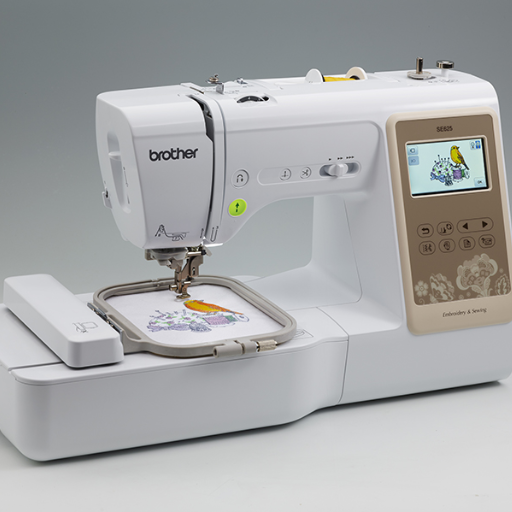
Many people embroider machines to personalize items, which seems to be the most common use. People can have towels, bathrobes, and linens monogrammed with their family members’ initials, making them great gifts and everyday items now infused with warmth. Decorating one’s home can also be considered a form of self-expression, as one can create embroidered pillowcases, table runners, or wall decor, which will be functional and look stunning within our homes. Fashion and clothing tailored with creativity are always fabulous, and it is expected to find people wearing jackets, shirts, or hats that have their logos or designs, allowing simple fashion items to look unique. Another popular fashion trend materializes in making patches that people can attach to their backpacks or jackets, many using them to highlight the hobbies or ideas they support. These ideas seem interesting because, with a suitable machine and the proper materials, one can produce not only artistic pieces but also items that are personal to an individual.
How to Create Christmas Decorations with Your Machine?
Involving the embroidery machine in decorating the Christmas tree makes the activity entertaining and colorful. In this case, the beginners can start with sections with Christmas-related images such as snowflakes, Christmas trees, and reindeer. Quite a number of the embroidery pattern design websites have Christmas embroidery patterns for download. After you’ve chosen a design, make sure your fabric will work well for the decoration you intend, whether it’s for ornaments or burlap for rough-looking wall decorations. After this, attach the fabric to a hoop tightly and work on a color scheme that integrates the design with a festive feeling. The hooped fabric must be stabilized appropriately to minimize the chances of fabric puckering during embroidery. Proper maintenance and attachments of the machine and the appropriate needle size are essential to achieve the purpose without any hitches. Last but not least, remember to accent your embroidered pieces with ribbons or beads to complete the look. Given time and proper consideration, your parents will be proud to hang the Christmas decorations made of embroidery on the tree.
What Cute and Fun Projects Can You Try?
Among all the projects I have engaged in using my embroidery machine, designing cute bibs with animal prints or other fun patterns for babies is one of the simplest yet enjoyable. Another great idea is producing colorfully threaded key chains for gifting friends. I also love making embroidered bookmarks; they are beautifully designed and serve the purpose of a bookmark, and every bookworm needs one. Besides the pleasure of making them, such projects also make wonderful handmade gifts, and everyone loves them.
How to Make Personalized Gifts for Family and Friends?
Embroidering personalized gifts with an industrial sewing machine is a practical and loving way to treasure people with a touch of style and originality. Choosing a design should be a relatively uncomplicated step: initials, monograms, or any other symbol that would be meaningful for the recipient. For maximum usability, always set your machine to the appropriate hoop size; 4 by 4 inches and five by 7 inches are commonly used, but you can decide depending on the nature of your work. Depending on the occasion, one can use soft cotton for the pillowcases or a sturdier fabric such as denim for tote bags. Additionally, always ensure the fabric is stabilized using the appropriate stabilizers; light fabrics use tear away while heavy fabrics employ cut-away stabilization. High-quality embroidery threads should be chosen for the design, and fabrics with suitable colors, decorative threads, and light hues are the best suggestions. Usually, working or stitching with a size 75/11 or 80/12 needle will work for most stitches. After the embroidery stage, finish the piece with details like seams or other additional decorations. Making gifts in such a way, paying attention to detail, and preparing for them in advance reflects your creativity and consideration and makes the gifts even more precious.
How to Master Machine Embroidery Designs?

There is a need for practice, testing, and knowledge of the factors and tools involved in creating machine embroidery designs. Start by evaluating all options for embroidery software used in design editing and alteration to ensure good results. You will be able to test the capabilities of machines and threads as well as learn about the embroidery process better with regular practice on the sewing machine. Maintain the machine well; regularly oil it, use clean machines, and change needles frequently to avoid problems. It is also essential to try different stabilizers to determine which suits various designs on a specific fabric. Meet people online or participate in workshops to get to know the secrets of the craft from more experienced embroiderers. As you improve your skills, do not be afraid to use complicated designs; this is very useful when learning machine embroidery because it encourages creativity and professionalism.
What Are Some Tips and Tricks for Successful Embroidery?
To ensure that the embroidery can be effective, beginning with the correct materials is paramount. For instance, you can choose quality fabric and threads, significantly impacting the end product and the project’s life. Avoid using the wrong type of stabilizers for different fabrics because they help eliminate any gouging and shifting of the fabric during the embroidery. It is also essential to ensure that your embroidery machine is regularly cleaned and needles are changed periodically to keep the probability of snags at a minimum. Understanding how to use embroidery software is also a plus in creating and modifying designs to fit the range of projects you are trying to undertake. Last but not least, practice makes perfect- try out new techniques to continue advancing your skills in embroidery. Use sites with this type of embroidery and other like-minded users willing to share helpful information regarding embroidery.
How to Use Embroidery Software for Design?
Four simple steps comprise preparing for design and editing using embroidery software. First, you want to inject some organization into your workflow by choosing software that can operate with your machine and contains features appropriate to your skill level. Import or craft a design in the software interface, be it internal or one that converts readily into stitches. Make the necessary design changes by editing features like design-whittling, design-turning, and integrating various designs. Change the kinds, lengths, and density of the outlines of the stitches depending on the fabric to achieve the intended results. Before proceeding any further, the design should be checked for accuracy of position and color tones so that they do not clash. The user must save the design in a format recognized by the machine, like PES or DST, once they finish designing. Transfer the designing file to the machine directly or through USB and embroider the chosen cloth. Soon after, the client will be confident that he can use the software to increase both the effectiveness and the artistic aspects of their future embroidery projects.
Where Can You Download Free Embroidery Patterns?
There are numerous websites where you can get free embroidery patterns to inspire and expand your creative boundaries. Many resources for embroidery templates suitable for almost any task can be found at sites such as EmbroideryDesigns.com, AnnTheGran.com, and FreeEmbroideryDesign.net, among others. Other sources include Pinterest and Craftsy, where many enthusiasts post their designs for free. Ensure that the designs you download are in the correct format for your machine, such as PES, DST, JEF, or EXP. In addition, look out for the recommended stitch count, hoop sizes, and thread types if you want the embroidery to be successful. Be careful to always download the files from trusted sites in order not to end up with damaged templates or viruses.
What Are Some Creative Sewing Ideas with Embroidery?

Embroidery has the potential to turn a simple sewing project into a creative masterpiece. Why not stripe an ordinary blue denim jacket with prints of flowers on the cuffs and back? Pillows and cushions also offer a blank canvas for creativity. To complement home decor, you wouldn’t go wrong with textile signs with decorated monograms or seasonal styles. Have sewing designs on tote bags for the beach or a shopping run.
Further, embroidered patches can be stitched onto jeans or jackets and function as mending and fashion items. Why not have embroidered napkins or table runners for special events to decorate your dinner or occasion and leave a subliminal impression? In this regard, each project is not only a form of expression but also a way of improving one’s sewing practice by including a vital visual element (embroidery techniques) in the final product.
How to Make Bags and Accessories?
When it comes to making items such as bags or accessories there is always a touch of creativity involved in that it is also practical. First, decide on a sturdy fabric to make the bag according to how it will be used; suitable materials include canvas, denim or leather. If you choose to make a bag or purse pattern, it is essential to find some; there are free and paid patterns on SewCanShe, Craftsy, and Mood Fabrics. These sites are beneficial as they provide many tutorials and templates that you can use for your project.
Next, after acquiring your materials and pattern, wash and iron the fabric so that all shrinkage occurs before construction. Cut the pattern and begin putting together the bag while following the instructions. Seam allowances should also be observed, for they help keep the shape and structure of the bag in place.
You may also want to personalize your bags by using unique embroidery designs. Look for suitable patterns on websites such as Pinterest and Etsy. The thread color and type should also be considered, as they can determine the appearance of your accessory.
The bag’s style will dictate what accessories will be needed on the bag, such as straps or clasps. You can also play around with the different styles of closers by using zippers, magnetic snaps, or buttons. To make handles, consider using solid materials or old, worn-out belts to ensure the handles are eco-friendly.
Finally, remember to verify all seams for strength after completing your project, adding a lining if necessary, to complete your work professionally. Planning and some creativity will help you make beautiful custom bags and accessories that reflect your craft and unique style.
What Are Some In-the-Hoop Projects?
Creating your custom designs with an embroidery machine is possible using an in-the-hoop project. However, the item is created using the hoop without being sewn after completion. Key fobs, zipper pouches, and coasters are everyday items made in the hoop. For such resources, here are a few helpful tips that I have come across: projects like these usually have pictures and templates you can follow. Websites such as Kreative Kiwi Embroidery display numerous projects for people of different proficiency – from beginner to advanced- who need an embroidery hoop to complete their projects. The creations are ideal for making unique and personal gifts or enhancing certain aspects of the house.
How to Add Embroidery to Clothing?
The fashion industry considers embroidery a popular addition as it dramatically increases the appeal and warmth embedded in the garment. Initially, I locate the apparel article and check whether it has been adequately cleaned and pressed. Next, I need to select the embroidered pattern that would match the fabric type and the garment’s cut. Hooping is now in place because a stabilizer is used while sewing to help hold the garment. I carefully hoop the material, making sure that the material is tight but not too tight. Afterward, I prepare the embroidery machine by inserting the correct colors of thread and needle. Understanding the design, I allow the machine to function independently while monitoring the progress at intervals. When the stitching work is done, I do my best to wash out all traces of the stabilizer and to iron the interfacing so that it fixes the stitches. Different fabrics might require slight changes in the steps, but with time and practice, it is a fun process.
How to Personalize Home Décor with Embroidery?

Another entertaining form of home décor that offers great personalization possibilities is the usable embroidery of home textiles. First, determine or select items such as cushions, table runners, or wall hangings you want to decorate. For employing embroidery patterns or designs, pick those that you are comfortable with or ones that compliment the particular room in your house. Once your fabric has been washed and ironed, it can be embroidered. It may be beneficial to use a stabilizer for added strength. Attach the frame to the material gently, preventing movement so the design is not stretched. Prepare your embroidery machine by setting the correct needle and threads and start the machine as it will place threads according to the design. After the sewing, use a tweezer to remove the remaining stabilizer and iron the sewn area so the stitches are flat. This technique makes it possible to enhance each area of the house with elegance and personal self-made decoration, modifying all the household articles as required.
What Embroidery Patterns Work Best for Home Projects?
For embroidery projects at home, it is best to choose easy patterns with a wide range. Geometric patterns are preferred because they easily fit in with any home project, whether a cushion cover or tablecloth. Another eye-catching alternative is florals or botanical style. These can also bring some nature into the home. Monograms or names could also be used, which can make them more personal and great for presents or particular rooms.
Furthermore, seasonal patterns, such as snowflakes or leaves, make the ambiance in the home more festive. Always select the ones that go well with the color and décor of the entire room. In short, the best patterns interpret your personality styles and would also be appropriate and beautify your house.
How to Create Table Settings and Linens?
Designing table settings and linens can be fun to showcase one’s taste in the dining environment. First, I look for the overall theme in the color schemes and then seek the appropriate tablecloths or placemats. I default to earthy colors and light textures and prints. Matching the napkins with the tablecloth or the plates gives an excellent finishing detail. While arranging the dining tableware, I ensure that plates, forks, knives, and glasses are placed in respective order and everything is arranged straight. Occasionally, I also use napkins or placemats, which are custom embroidered with simple designs or initials that might be interesting. Centerpieces such as a bright, tiny flower vase or candle can change the atmosphere. At last, when setting the table, I leave enough space for serving plates so guests can eat comfortably.
What Are Some Unique Ornaments You Can Create?
Making one-of-a-kind ornaments expresses artistry and style. Making ornaments of pinecones, twigs, or dried flowers includes chances to make decor elements that are rustic and attractive. One possibility is further embellishing the natural components with metallic paints or glitter. Another idea is to use polymer clay to make ornaments. This material makes it possible to create forms of any complexity. Clay figures can be baked to set them hard and then decorated with paint. Ornaments of unique photos may also be meaningful ornaments. To make these, use transparent glass or plastic spheres, put photo images inside them, and decorate them with ribbons or other small ornaments. Other exciting ideas are using old clothes, bottle caps, and other ordinary things, making it possible to create creative designs. These artistic ideas allow for varying textures and styles offered by the different approaches, making each oblique apple effortlessly appealing and distinct.
References
Frequently Asked Questions (FAQ)
Q: How can I find free embroidery machine patterns to start new projects?
A: You can find free embroidery machine patterns by exploring websites specializing in machine embroidery projects. These sites offer many patterns, from pretty lace designs to fun holiday motifs like bunnies and Santa. You can also subscribe to newsletters for updates on the latest free patterns.
Q: Can I use my embroidery machine to create lace designs?
A: You can use your embroidery machine to create intricate lace designs. Many embroidery machines have built-in lace patterns, or you can download lace files online. Use the appropriate stabilizer and fabric to achieve the best results.
Q: What type of fabric is best for machine embroidery projects?
A: The best fabric for machine embroidery projects depends on the design and final use of the item. For example, cotton is great for quilts and t-shirts, while linen is perfect for delicate projects like lace. Always make sure to use a stabilizer suited to your chosen fabric.
Q: Are any videos available to help me with my embroidery projects?
A: Yes, there are many videos available on platforms like YouTube that provide tutorials and ideas for machine embroidery projects. You can view these videos to learn new techniques, get creative inspiration, and see detailed step-by-step instructions. Check the video description for notes and timestamps to navigate the content easily.
Q: How can I embroider a Halloween design?
A: To embroider a Halloween design, you can find spooky patterns like pumpkins, ghosts, or witches. Use your embroidery machine to stitch these designs onto fabric items like t-shirts or tote bags. Many sites offer free Halloween patterns, or you can purchase themed design files for a more unique project.
Q: What fun embroidery projects can I make for my mom?
A: Some fun embroidery projects for your mom include personalized hand towels, a garden-themed apron, or a quilt featuring her favorite colors or motifs. You can also create a pretty lace bookmark or a custom embroidered tote bag.
Q: How can I get creative with embroidery for a little girl?
A: You can embroider cute and fun designs like animals, flowers, or favorite characters onto clothing and accessories for a little girl. Appliqué designs like bunnies or superheroes are popular choices. Consider personalizing items like t-shirts or backpacks to make them extra special.
Q: What should I know before starting a machine embroidery project?
A: Before starting a machine embroidery project, ensure you have the right equipment, including a reliable embroidery machine like a Brother model, suitable fabric, and stabilizers. Familiarize yourself with your machine’s embroidery file format and ensure you have suitable design files. Reading the project description and any available transcripts or tutorial chapters can also be very helpful.
Q: How can I upload and use original content for my embroidery projects?
A: To upload and use original content, you may need embroidery software that allows you to create or modify designs. Once you’ve made your design, save it in a file format compatible with your embroidery machine. Then, you can transfer the file to your machine via USB or other supported methods and start your project.



